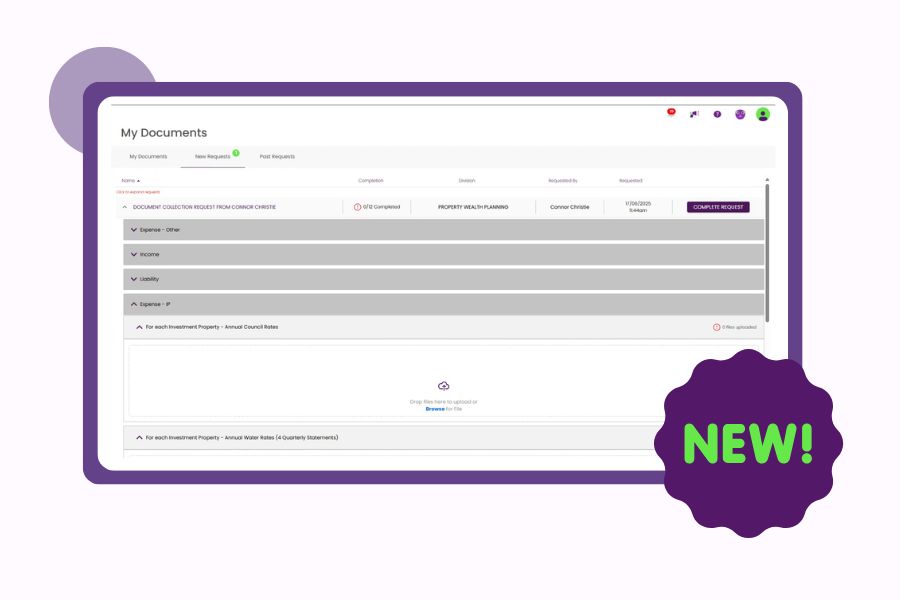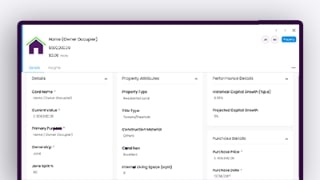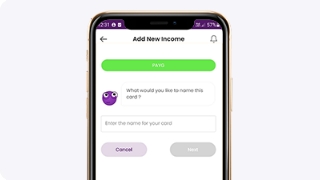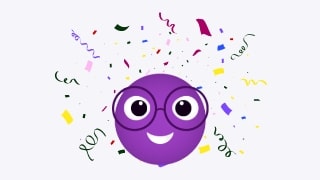This is one of the more difficult concepts in MoneySMARTS (luckily the Portal does the calculation for us!).
The key point to start with is that all available cash is being held in the Primary (Offset or High-Interest Savings) Account to maximize your Interest benefit, so your Cash Position at any time consists of three components – your Starting Cash Position for the year, the amount of surplus money that you’ve captured so far this year, and the amount of money that you’ve been allocating for provisioning spending but haven’t yet spent, i.e. :
Cash Position = Starting Cash Position
plus Accumulated Actual Surplus
plus Yearly Remaining Provisioning Total
To calculate the amount of the Accumulated Actual Surplus, you need to separate out these three components, i.e.
Accumulated Actual Surplus = Cash Position
minus Starting Cash Position
minus Yearly Remaining Provisionings Total
Hopefully, this makes sense as long as the Yearly Remaining Provisionings Total is a positive number, but what if it goes negative? To explain, we need to consider how the Yearly Remaining Provisionings Total can actually be a negative number. Remember that at the start of the year, we decided on an amount for Planned Provisioning Spending for the whole year and calculated how much of our Income would need to be set aside each month to cover this amount. We then added this amount to the total each month and subtracted anything we had actually spent to arrive at the figure for the Yearly Remaining Provisionings Total. If this money was being held in a separate account, the balance could never go negative, and we would have to wait until there was money in the account before we could spend it.
But, as all of our available money is being held in one account, we can actually use some of the Accumulated Actual Surplus money in the Primary Account to allow us to spend some of our Provisioning allocations before it is there for us to spend. In effect, we are borrowing money from the Accumulated Surplus jar to allow ourselves to bring forward some of our Provisioning spending rather than waiting until we have accumulated the necessary amount from the monthly allocations, and the result is that we now end up with a negative balance for the Yearly Remaining Provisionings Total.
When calculating the Accumulated Actual Surplus, we want to include all the surplus accumulated up to that point, even the funds borrowed to bring forward provision spending. Instead of subtracting a positive number (if the Yearly Remaining Provisionings Total is positive), we subtract a negative number to acknowledge that we have borrowed funds from the Accumulated Actual Surplus. This borrowed amount is still counted as part of the accumulated surplus and will be paid back over the remaining months of the year (assuming adherence to the provisionings allocation).
So, let’s put this into practice with some basic numbers:
| Monthly provision | $100 ($1200 yearly expense) |
| Spend on everything else | $500 |
| Expected surplus each month (Monthly actual surplus) | $1000 |
If in the first month, you have an extra $1000 in your account (Cash position – Starting Cash Position), but you haven’t spent the provision amount of $100, the Monthly actual surplus will be $900. This is because the surplus is calculated separately from provisional spending. If you didn’t spend the $100 but your cash increase is $1000, it indicates overspending in other areas. To calculate the correct surplus without spending the $100 provision, the extra funds in your account should be $1100 ($1000 surplus PLUS the unspent provision). Now, let’s consider the opposite scenario of overspending on provisions. If in the first month, you still have an extra $1000 in your account (Cash position – Starting Cash Position), but you spent $200 of the $100 provision amount, it means you have overspent in provisions but underspent in other areas. This increases your surplus.
The provision component is separate from other calculations as it accounts for ad hoc large expenditures. If you overspend in this category, you will notice a reduction in the provisional balance. However, it is not advisable to consistently overspend in provisions as it is not meant to be a category with consistent overspending. Consider a real-life example where the yearly total is $1200, allocated for a holiday, and the $200 was intended for purchasing tickets. Since you are unlikely to buy tickets every month, the unspent monthly provision will balance out. It is akin to a loan to yourself when overspending occurs in provisions due to the nature of the expenses assigned to this category.
Remember, the MoneySMARTS system operates based on rules to change behavioural patterns. Attempting to circumvent or cheat the rules only hinders personal progress. Overspending is highlighted in the appropriate areas to promote conscious spendings, such as having separate accounts for living expenses and lifestyle choices. If you do overspend, you need to actively transfer money to cover the shortfall. Provision spending is also monitored, allowing you to see the remaining yearly amount and relevant graphs.
👉Moorr: Your trusted partner in financial management! Tap here to get the Android App or here for the iOS app for a suite of tools including WealthCLOCK and Residential Property Insights.











